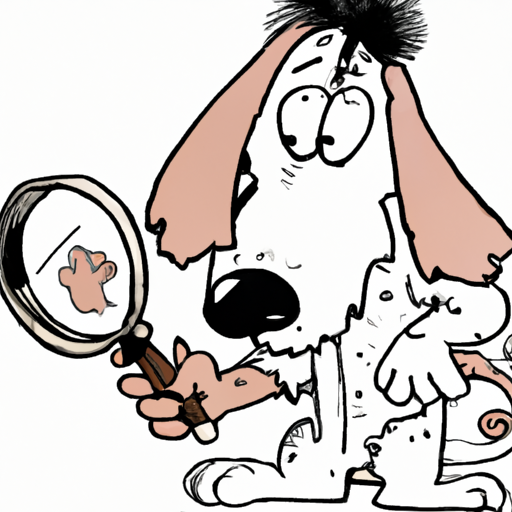Hair loss in dogs, also known as alopecia, can be a distressing issue for both pet and owner. As a caregiver, you might find it troubling to see your furry friend lose their luscious coat. If you’re wondering why this is happening, there can be several reasons.
1. Common Reasons for Hair Loss in Dogs
There are several potential causes for your dog’s hair loss. Here are the most common ones:
-
Allergies: Dogs can be allergic to a variety of substances, such as certain foods, fleas, or environmental allergens like pollen or dust mites. These allergies can cause intense itching, leading to hair loss due to excessive scratching or licking.
-
Parasites: Fleas, mites, and ticks can cause severe itching and subsequent hair loss in dogs.
-
Hormonal Imbalance: Conditions like hypothyroidism or Cushing’s disease can lead to hair loss in dogs.
-
Genetics: Some breeds are more prone to hair loss than others due to their genetic makeup.
-
Infections: Bacterial or fungal infections can cause hair loss in dogs.
2. Identifying the Signs of Hair Loss
Identifying the signs early can help you address the issue before it worsens. Look out for these signs:
- Excessive scratching, licking, or chewing at certain spots
- Bald patches or thinning of hair
- Redness, inflammation, or scaly skin
- Changes in the dog’s behavior, such as increased aggression or reduced appetite
3. Treatment Options for Hair Loss in Dogs
The treatment largely depends on the underlying cause. Here are some common treatment options:
- Medication: This could include antibiotics for infections, steroids for allergies, or hormone therapy for endocrine disorders.
- Parasite Control: This could involve topical treatments or oral medications to control fleas, ticks, or mites.
- Dietary Changes: If food allergies are suspected, a change in diet may be necessary.
- Surgery: In rare cases, if the hair loss is due to a tumor or cyst, surgical removal may be required.
4. Preventing Hair Loss in Dogs
Prevention strategies will depend on the underlying cause. Here are some general tips:
- Regular grooming to keep the coat and skin healthy
- A balanced diet to ensure your dog gets all necessary nutrients
- Regular vet check-ups to catch any potential issues early
5. When to Consult a Vet
If you notice any signs of hair loss in your dog, it’s best to consult a vet immediately. Hair loss could be a sign of an underlying health issue that needs immediate attention.
| Signs | When to Consult a Vet |
|---|---|
| Bald patches | Immediately |
| Excessive scratching | Immediately |
| Change in behavior | Immediately |
Frequently Asked Questions
Q: Can stress cause hair loss in dogs?
A: Yes, just like in humans, prolonged periods of stress can lead to hair loss in dogs.
Q: Can my dog’s hair grow back after hair loss?
A: It usually depends on the cause of the hair loss. In most cases, once the underlying issue is treated, the hair will grow back.
Q: How long does it take for a dog’s hair to grow back?
A: It varies depending on the breed and individual dog, but typically it takes around 1-3 months.
Remember, as a caregiver, your dog relies on you for their health and well-being. By understanding why dogs lose hair, you can take the appropriate steps to help your dog maintain a healthy, shiny coat.



